Q: I have long been a fan of clicker training. As a breeder, I love starting my pups on clicker training before they leave for new homes. They are such little sponges! About three weeks ago, I rescued an adorable beagle. His person had to give him up a) because she's moving from a house to a small apartment, b) he kept escaping her rockery fence, c) which resulted in his being chained behind a solid fence all day and put in a 8' x 8' chain-link kennel at night.
He knows "sit" and "down." We've been working on walking on a loose lead, waiting for meals, and other basics. He loves other dogs, kids, and people. In the last few days, however, we've found he's food aggressive. He will take his own food/treat without a problem, but then go to one of my other eight dogs' bowls and growl, then bear teeth, and then bite if the dog won't give up his/her food. Okay, that can be managed by feeding him alone.
More disturbing is, he is now going after the other dogs' treats. He doesn't respond to "leave it!" When held by the collar and told to "leave it," he continues to go after the dog and snap at either myself or my husband. Last night, when he did this with me, I put my hand around his muzzle and told him "enough." (I know...big mistake on my part.) He managed to flip his head out of my hand and bite me. Thankfully, he didn't break the skin, but this was not a warning bite and his whole demeanor changed.
I've been a trainer for the past 12 years. I just can't think of how to "click" this 4-year-old pup out of this behavior and may have to rehome him again because of it. But, if there's a way to try and break this, or manage it with the clicker, I am willing to try it.
A: I wouldn't want to address aggression problems at long distance. I suggest you take a look at Emma Parsons's book Click to Calm. Her sensible suggestions and "recipes" have helped a lot of people, and you may find specific advice that resonates with you and seems to apply to your situation. I do think that rehoming the dog again is not a very good solution. Where could you possibly find a home that has a more skilled owner/handler than you? You are simply handing a potential danger over to someone else, and a child or other visitor might be the one who gets seriously injured.
Worse yet, the new owner might put the dog in a shelter, and then yet another family might be charmed by the dog's friendliness and the problem—and the injuries—just go on to a third family, or even more. See if Emma's book gives you some ideas for repairing the food guarding. It can be done, and you are certainly a good one to try it. If you do NOT find a clicker intervention that works for you, I would recommend seriously considering either keeping the dog (and perhaps isolating it when other dogs are getting food or treats) or euthanasia rather than trying to rehome yet again.
Follow-up Q: Thank you so much for replying. I have to say I made the decision to "manage" the food aggression and observe. Little Clancy is doing great. He's tethered when he gets fed now and has no problem with that. He's learned to sit and wait for his food bowl and be given the "take it!" command before he can eat. He loves the clicker and will go through whatever tricks he knows to figure out what he's supposed to do. This issue only comes out around food (I've tested him on other things). He no longer goes after the other dogs at bedtime "treat" time as he has to sit and wait. I'm so proud of him and the way he's responded. I think he had a bit of a different life before than what I was told (isn't that always the way). Thanks for the support on not rehoming him. I didn't want to, and especially for the reasons you brought up. He can't go to a home that thinks he's cute, but has no experience handling dogs with issues.
I am bringing home another rescue next week, under totally different circumstances. I am taking a course in "Missing Pet Rescue." By next year, the plan is to be working this rescue with a K9 partner. The new rescue dog is 9 months old and has shown a great aptitude for this. AND, he doesn't know much about obedience (okay, nothing), but he has been clicker trained to go in his crate, "find," and respond to the clicker for treats! I'm looking forward to this! Don't you think this work is just MADE for clicker training?
I did get the book Click to Calm. Now I have to devote time to reading and using it. I have another dog who is so full of herself and has so much energy that she comes on like she's going to eat other dogs. She doesn't cause any harm, but does frighten other dog owners. She's what I would call "rude" in terms of speaking dog language.
Follow-up A: Congratulations on the great job with Clancy. Sounds as if he's a nice dog who just needed to find out some better ways to behave.
Of course I think clicker training was made-to-order for this work.
Have you thought of going to ClickerExpo? You might find the intermediate and advanced sessions in this three-day, five track program extremely useful to extend your mental clicker "tool kit" into new areas.


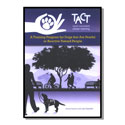
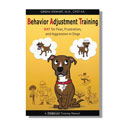
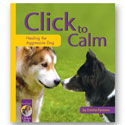
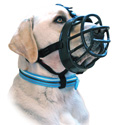
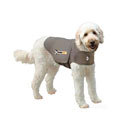

Post new comment